Top 7 Video Marketing Trends to Watch Out for in 2022..

VIXY makes professional video management accessible for your organization. You can count on reliable video hosting and ultra fast video playback worldwide with VIXY.
Easily determine where and when your video can be watched, enrich your video player with interactions, generate leads to your site and link your video player with the ad network of your choice.
Publishing epic video content on your site is great. Having a solid marketing strategy is great. Now imagine if you can do BOTH. That’s where the real magic happens. There’s no sleight of hand involved here. It’s all about strategy and consistency.
Are you tired of creating and publishing video content without getting the results you want? Are your videos getting ignored or not getting enough engagement from your target users? I know how that feels.
Luckily, there are steps you can take to ensure that your video marketing strategy is translating into positive business outcomes, not to mention meaningful and profitable relationships with your customers. But first, let’s talk about why you need a video marketing strategy in the first place. Consider the following statistics:
One thing’s clear: Video marketing is the holy grail for businesses in today’s cross-device, cross-platform world. But you need to do it right. And if you want to do video marketing right, you need to have a strategy. So without further ado, here’s an essential guide on how to create a video marketing strategy that will catapult your business to new heights.
You can’t create a business strategy, much less a video marketing strategy, if you don’t have a specific goal in mind.
But don’t just set any goal that comes to mind. You have to set goals that really count. After all, you don’t want your business to drift from one milestone to another while accomplishing very little. You need goals that can set you on the path towards the right outcomes.
To ensure that your goals are worth pursuing, I suggest using the SMART goals approach. SMART is an acronym that stands for specific, measurable, achievable, relevant, and time-bound. If your goal satisfies all five criteria, then you are on the right track. We’re not going to dive into all of them here, but if you want to know more about the SMART approach, you can read Smart Insight’s very helpful explanation.
To give you more ideas, below are some video marketing goals that are worth considering:
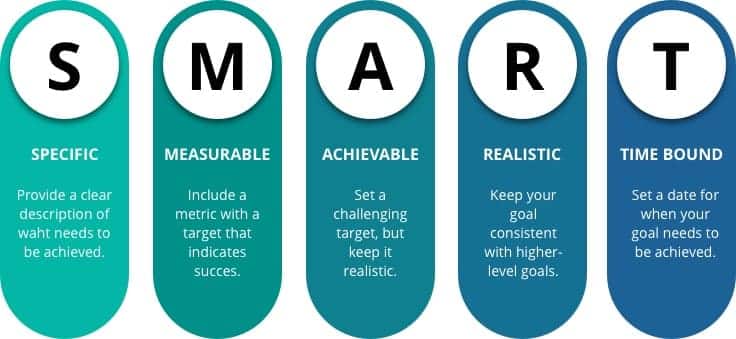
Your videos are not about you. They’re about your audience. The sooner you realize this fact, the better it will be for your video marketing and, ultimately, your bottom line.
If you want to attract the right visitors and keep them coming back, you have to make sure that your videos are resonating with them. A video that makes them think, “wow, these guys get me!” has a better chance of being watched all the way through.
When you know and understand your audience, you can tailor your video content in a way that connects with them. Being able to identify their pain points puts you in a much better position to provide them with the right solutions. You need to drop value bombs and make sure that visitors are taking something away from the experience and are learning from it.
Make sure your video evokes an emotional response. Remember, people feel before they think. As research shows, viewers are more inclined to share emotional video content with friends, family, and colleagues — especially the ones that elicit positive emotions.
Always aim to make videos that evoke a strong and direct emotional response. Use the element of surprise to your advantage. Show viewers something they’re not expecting and drop knowledge bombs that amaze and inspire. In your targeting efforts, ask yourself these questions about your target audience: Who are they? How do you want them to respond? And how are you going to get that reaction through online video?
Think well beforehand which emotion is best suited to drive home your brand’s message. Is it more logical to create videos that inspire or would it be best to make your viewers laugh? Remember, videos that are hitting the right emotional beats are more likely to instill customer loyalty.
One of the best ways to get to know your ideal customer and thus refine your targeting efforts is to create detailed buyer personas.
A buyer persona, to put it simply, is a semi-fictional representation of your ideal customer based on extensive data about your prospects and existing customers. By assigning personality attributes such as gender, age, location, lifestyle, and interests to this aggregated version of your target audience, you can easily refine your video marketing and advertising to meet the needs of your customers. It also keeps your brand message consistent.
Remember that when you’re writing your buyer persona, your main goal is to write the story of your target audience’s journey towards your business. Make it open-ended, leaving enough details that give hints as to how your business can address your ideal customer’s pain points.
To make your buyer personas more detailed, you can define the following major elements for each:
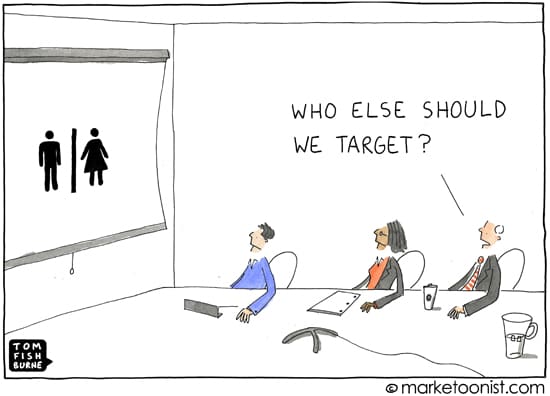
You now have your business’s objectives and goals in place. You’ve got your buyer personas printed out and shared with your team. You also know how important it is to keep your messaging and tone consistent across all marketing channels (not just video marketing).
The next order of business, of course, is to take all of that and then turn it into something concrete, comprehensive, and goal-oriented.
In short, you need a plan. A video content plan, to be exact.
You can start by looking at the end goal and then working backwards from there. If the main goal of your video marketing campaign is to grow your email list, you can start by fine-tuning your CTA’s in all your videos. Maybe using gated video content or optimizing your video landing pages can help? If your goal is to create a buzz around your product or service, you can launch an animated explainer video that not only provides a simpler explanation of your services to prospects but also gives them something to be excited about.
The key is to create and publish the types of video content that will help you accomplish your goals.
With that said, don’t forget to diversify, both in terms of topic areas and video content types.
Diversifying your video content can help your video marketing strategy in more ways than one. First off, it allows you to address the different needs of your customers. An explainer video, for instance, is ideal for introducing your services to your target audience. However, it generally does a poor job at establishing a personal connection with them. You can use live webinars for that.
Check out the example of Nike here, they made this video for entertainment purposes and to create a buzz around the brand.
Below are the types of video you can include in your video marketing plan:
Remember, the goal here is not just to diversify, but to diversify without sacrificing the consistency of your tone and brand message. This way, your video content, whether it’s an explainer video or a case study video, can create a lasting impact and impression on your customers over time. Being inconsistent can throw them off and make them think twice about purchasing your products and services.
One excellent strategy that will bolster your efforts to diversify your video content is the “hero, hub, hygiene” method.
The Hero, Hub, Hygiene method basically says you need three types of content, which are as follows:
Hero content aims to appeal to a wider audience in the hopes of attracting new ones. Its main purpose is to create a buzz around your brand and put it on the map. You can think of it as “viral video marketing.” Hero videos usually have a high production value, thus requiring a higher investment. Launching a hero video during a product launch or an important event is ideal.
Hub campaigns are regularly scheduled campaigns geared towards increasing engagement among your audience. Hub videos are specific and more in-depth, thus reinforcing your brand message in ways that can draw more involvement and response from your consumers.
These are regularly-produced video content that aims to draw the attention of consumers who are actively seeking answers and solutions which your brand can provide. The main goal of hygiene content is to establish your brand as a thought leader and a reliable solutions provider. Hygiene campaigns also serve to attract new prospects via search engines.
Producing a targeted mix of Hero, Hub and Hygiene videos is a potent marketing strategy because it works on so many levels. It attracts new audiences, keeps them interested, and secures their long-term loyalty.
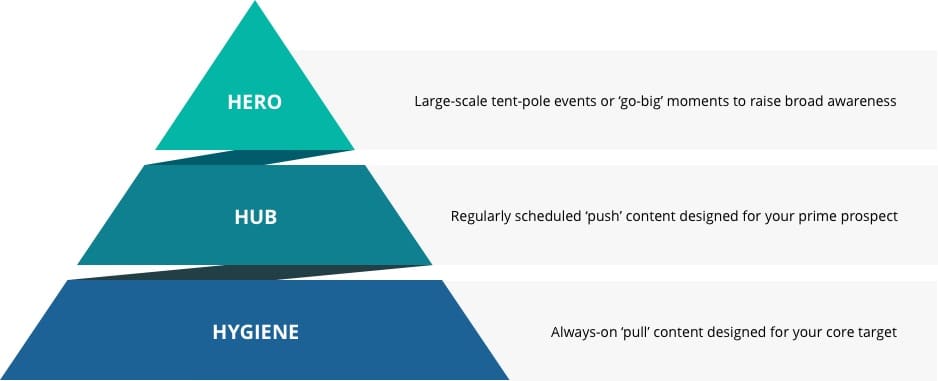
As is the case with any concrete content marketing strategy, you need to create a video marketing plan with your marketing funnel in mind. What this means is that you have to take into account the entire customer journey in your marketing campaign, from the moment they discover your business all the way to purchasing your products and services on a regular basis.
The marketing funnel has numerous variant models, but one that is easy to remember is the AIDA model, which stands for Attention, Interest, Desire, and Action. The key is to create a video content plan that addresses all four elements. You need videos that are effective at drawing your audience’s attention (how-to videos, introduction videos, behind-the-scenes videos, etc.), videos that can hold their interest (FAQs, on-demand webinars, product demos, etc.), videos that can make them desire your product more (walkthroughs, video case studies, video comparisons, etc.), and videos that will make them hit that “Subscribe” button (client testimonials, product reviews, personalized video emails, etc.) You are on the right track if you have all these.
In short, a sound video marketing strategy involves a diversified approach, so much so that it hits on multiple touchpoints in the customer journey, thus creating a clear path towards conversion and retention.
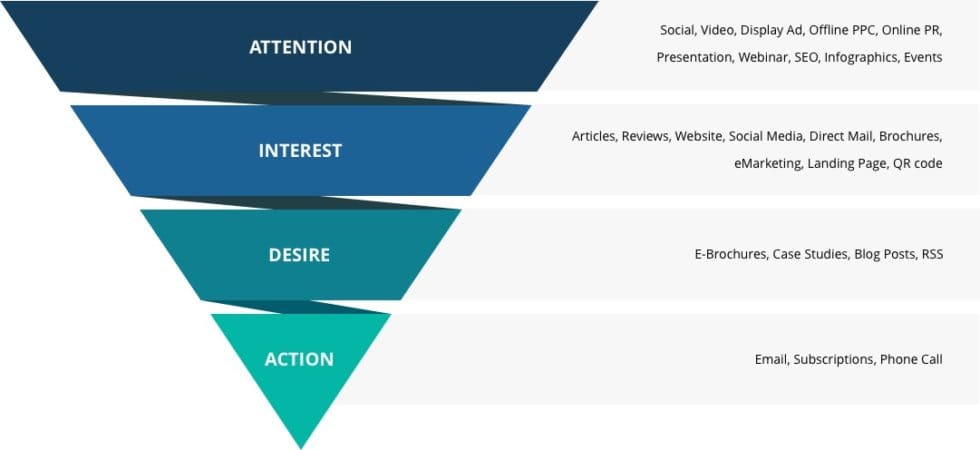
Now that you have a concrete video marketing plan in place, it’s time for you to bring it to execution. You have to round up your team and delegate tasks so that you can start recording. These tasks include:
If your budget allows, it’s in your best interests to invest in an in-house videographer or a creative director who can come up with creative concepts that will nail down your brand message. An editorial board can also help to make sure that the videos are executed to perfection.
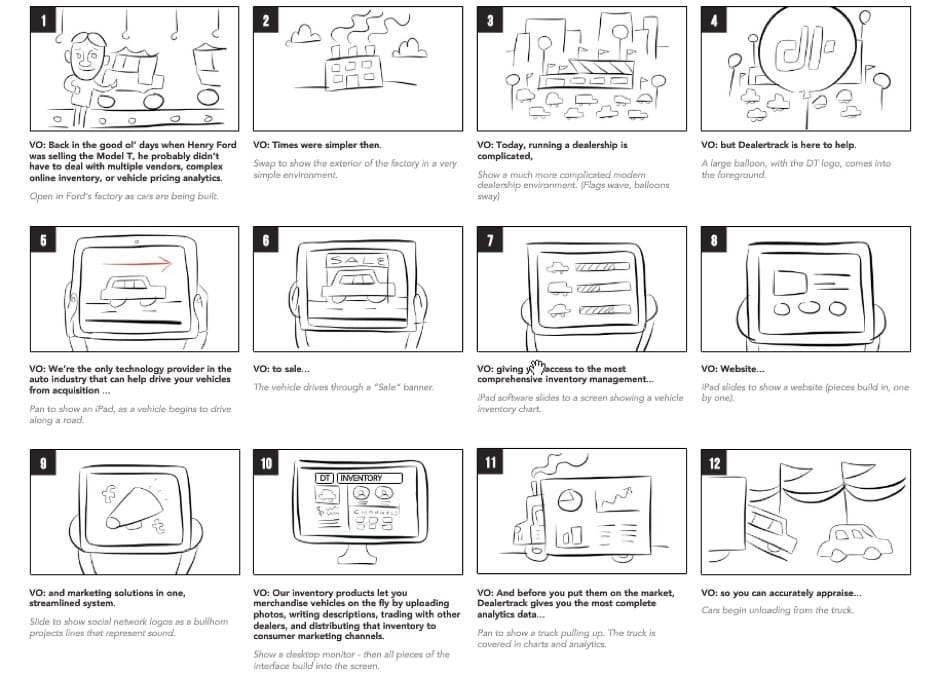
You now have your videos. But where do you publish them?
Did you just say YouTube?
I’m not recommending it.
Well, you do have that option if you insist. But remember, one of your goals is to keep your visitors on your site. YouTube might be great for the traffic that you can get on YouTube, but the popular video-sharing platform has too many distractions (such as ‘Related Videos’) that can lure your visitors away from your site. Bear in mind that Tube’s goal is different from yours. (Also, make sure to check out our article about YouTube vs your own video platform)
If you really want your video marketing efforts to engage and convert visitors (according to your brand’s goals), you can do better by using a branded video player or a private video platform like VIXY. VIXY is not your typical video player, it’s also a platform that supports interactive video and extensive player customization (among other things, which we’ll go over shortly).
Advantages? Let me count the ways.
In short, using a branded video or a private video platform not only makes your videos look more professional, it also offers you a wide range of features that can help you leverage your video marketing to its fullest potential.
One downside to using branded videos is that you have to pay for a monthly subscription. That said, it’s one of the best investments you can make as a business owner, especially if you integrate a solid video marketing strategy into a video platform that is powerful, flexible, and scalable.
Check out what we did for Binck bank here:
As the old adage goes, it’s not marketing if you’re not measuring.
With a specific goal in mind, you should be able to determine the KPI’s that will help you chart your progress towards your company’s goals. With the right tools, you can keep track of them and be able to identify areas that require improvements. Using in-depth video analytics tools, you can come up with actionable insights that can help you serve your customers better and in turn improve your conversion rates and sales.
Let’s imagine a few scenarios where KPI’s could come in handy.
Are your videos getting a ton of views but have little to show in terms of engagement? The tone might be off or the videos may not be relevant enough. Maybe a refinement of your buyer personas is in order.
Are your videos getting high engagement from users but the conversion rate is low? Your CTA’s might need some work. You can make your CTA text more clear and convey more value. It might be better to show your CTA’s earlier on the video timeline as well.
Is your video player getting tons of impressions (player loads on the page) but visitors are not pressing the play button? Your thumbnail (video stills) might not be relevant enough or decide to autoplay your videos.
Views and engagement too low? Ramping up your promotion efforts might fix that.
And so on.
There are a plethora of ways to measure the progress of your video marketing, including:
Social media platforms like Facebook, Twitter, and YouTube have analytics tools that can help you keep track of important video metrics and benchmark your progress.
You can even go more in-depth in terms of video analytics by using a private video platform like VIXY. The richer the analytics, the more opportunities you have for optimizing your video marketing campaigns.
As an example, one of our biggest clients, Binck, has used our video platform’s advanced Google Analytics event tracking functionality to track and acquire helpful insights from the most important interactions and customer journeys of visitors to their site. Binck is one of the most successful online brokers in the Netherlands.




